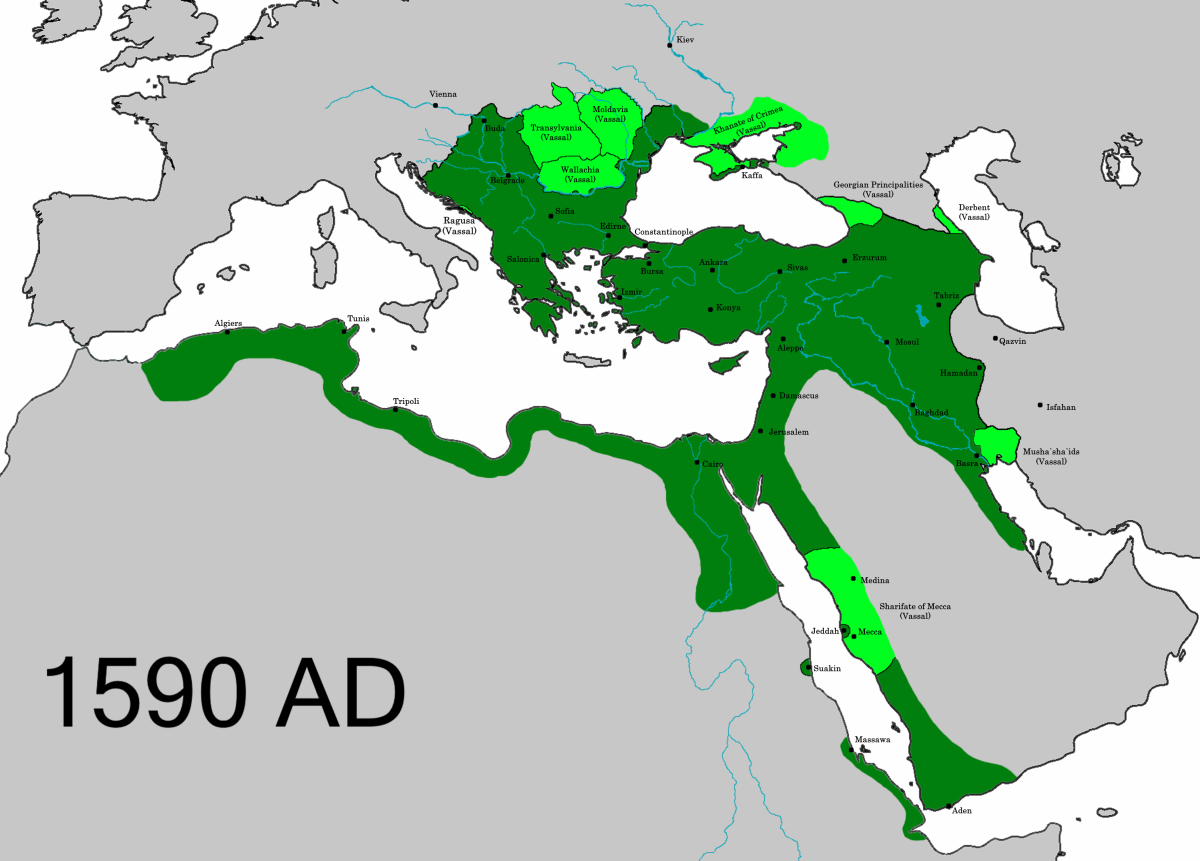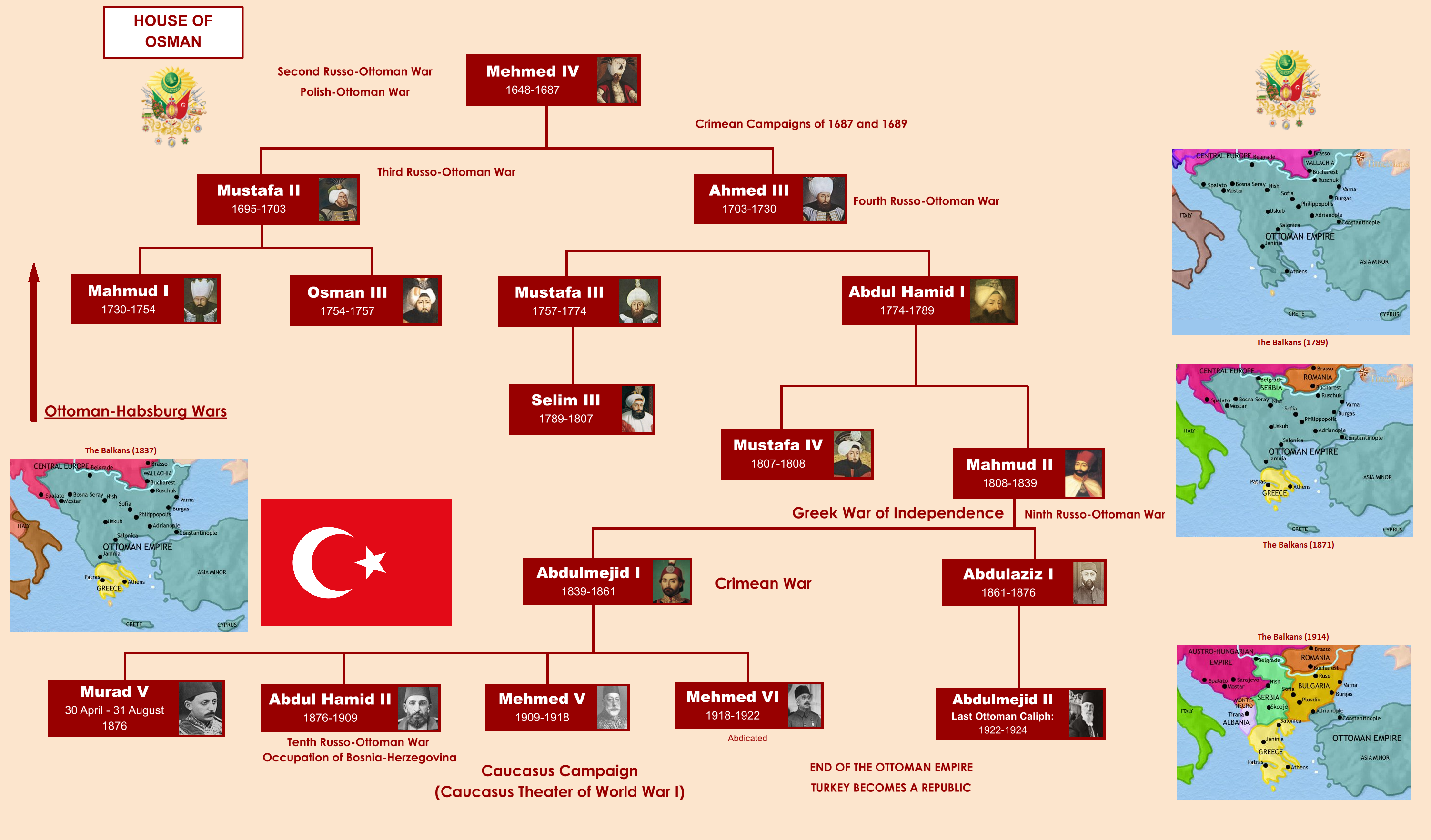The Ottoman Empire
The Establishment of the Ottoman Empire
The Ottoman Empire, one of the most significant and enduring empires in history, was founded by Osman I in the early 14th century. The empire emerged as a small principality in Anatolia and gradually expanded to become a vast and powerful multi-ethnic state that encompassed parts of Europe, Asia, and Africa. The establishment of the Ottoman Empire marked a pivotal moment in the history of the region and had far-reaching consequences for centuries to come.
Early Origins:
The origins of the Ottoman Empire can be traced back to the late 13th century when Osman I, a Turkish tribal leader, began to consolidate his power in northwestern Anatolia. Osman and his followers, known as Ottomans, gradually extended their control over the surrounding territories, benefiting from the decline of the Byzantine Empire and the fragmented political landscape in the region.
Rise to Power:
Under the leadership of Osman I and his successors, the Ottoman principality continued to expand, annexing new territories and establishing control over key trade routes. The Ottomans capitalized on the weakness of neighboring states and employed innovative military tactics, including the effective use of cavalry and siege warfare, to conquer new lands.
Key Conquests:
One of the most significant conquests in the early history of the Ottoman Empire was the capture of Bursa in 1326, which served as the empire's first capital. The conquest of Bursa not only provided the Ottomans with a strategic foothold in northwestern Anatolia but also signaled their emergence as a major regional power.
Expansion into Europe:
In the late 14th and early 15th centuries, the Ottoman Empire expanded into southeastern Europe, conquering territories in the Balkans and establishing a presence on the European continent. The capture of Adrianople (modern-day Edirne) in 1361 marked the Ottomans' first major territorial acquisition in Europe and paved the way for further expansion into the region.
Fall of Constantinople:
The crowning achievement of the Ottoman Empire's expansion into Europe was the conquest of Constantinople in 1453. Led by Sultan Mehmed II, also known as Mehmed the Conqueror, the Ottoman army laid siege to the Byzantine capital for nearly two months before breaching its walls and capturing the city. The fall of Constantinople marked the end of the Byzantine Empire and established Ottoman dominance over the eastern Mediterranean.
Legacy:
The establishment of the Ottoman Empire had a profound and lasting impact on the history of the Middle East, Europe, and beyond. The empire's centralized administration, religious tolerance, and cultural diversity contributed to its longevity and influence. Although the Ottoman Empire eventually declined and collapsed in the early 20th century, its legacy continues to shape the politics, society, and culture of the modern world.
The Rise of the Ottoman Empire
The Ottoman Empire, one of the longest-lasting and most powerful empires in history, experienced a remarkable ascent from its humble beginnings as a small Anatolian principality to a vast imperial entity that dominated large parts of Europe, Asia, and Africa for over six centuries. This article explores the factors that contributed to the rise of the Ottoman Empire and examines key events and developments during this transformative period.
Founding and Early Expansion:
The Ottoman Empire traces its origins to the late 13th century, when Osman I, a charismatic Turkic leader, established a principality in northwestern Anatolia. Under Osman and his successors, the Ottomans rapidly expanded their territory through a combination of conquest, diplomacy, and strategic alliances. By the early 15th century, the Ottomans had emerged as a major regional power, controlling vast swathes of Anatolia and the Balkans.
Military Innovation and Tactics:
One of the driving forces behind the Ottoman Empire's rise was its military prowess and innovative tactics. The Ottomans developed highly effective military institutions, including the elite Janissary corps, which comprised Christian slave soldiers converted to Islam and trained as elite warriors. Additionally, the Ottomans perfected the use of gunpowder weapons, such as cannons and muskets, which gave them a significant advantage on the battlefield.
Strategic Geopolitical Position:
The geographical location of the Ottoman Empire played a crucial role in its rise to power. Situated at the crossroads of Europe, Asia, and Africa, the Ottomans controlled key trade routes and enjoyed access to valuable resources. Moreover, the empire's strategic position allowed it to expand into neighboring territories and establish dominance over lucrative trade networks.
Diplomacy and Statecraft:
In addition to military strength, the Ottomans employed shrewd diplomacy and statecraft to expand their influence and secure their borders. Ottoman rulers skillfully negotiated alliances and treaties with neighboring states, often exploiting rivalries and divisions among their adversaries. Furthermore, the Ottoman practice of incorporating conquered territories into a centralized administrative system helped maintain stability and control over diverse populations.
Cultural and Intellectual Flourishing:
During the height of its power, the Ottoman Empire witnessed a flourishing of art, architecture, literature, and scholarship. Ottoman rulers were patrons of the arts and commissioned magnificent mosques, palaces, and monuments that showcased the empire's wealth and grandeur. Moreover, the Ottoman court attracted scholars, poets, and intellectuals from across the Islamic world, fostering a rich cultural and intellectual environment.:max_bytes(150000):strip_icc()/GettyImages-624913026-5b16b8683418c600370c85c9.jpg)
Conclusion:
The rise of the Ottoman Empire was a complex and multifaceted process shaped by military conquests, geopolitical factors, diplomacy, and cultural achievements. From its modest beginnings in Anatolia, the Ottomans ascended to become one of the most formidable empires in history, leaving a lasting legacy that continues to influence the modern world. Despite its eventual decline and dissolution, the Ottoman Empire remains a testament to the enduring power of ambition, innovation, and statecraft.
The Decline of the Ottoman Empire: Causes, Consequences, and Legacy
The decline of the Ottoman Empire, once a formidable global power, is a complex and multifaceted phenomenon that unfolded over several centuries. From its zenith in the 16th and 17th centuries, the empire entered a prolonged period of stagnation and decline characterized by internal strife, external pressures, and socio-economic challenges. This article explores the causes, consequences, and legacy of the Ottoman Empire's decline.
Causes of Decline:
- Internal Fragmentation: One of the primary factors contributing to the Ottoman Empire's decline was internal fragmentation and administrative inefficiency. As the empire expanded, it became increasingly difficult to govern diverse populations and distant territories effectively. Corruption, nepotism, and bureaucratic inertia weakened the central authority and undermined the empire's stability.
- Economic Decline: The Ottoman Empire experienced economic stagnation and decline due to a combination of factors, including overreliance on traditional agrarian practices, monopolistic trade policies, and fiscal mismanagement. Declining revenues, coupled with rising military expenditures and debt, strained the empire's finances and eroded its economic vitality.
- Military Weakness: The Ottoman military, once renowned for its prowess and discipline, gradually declined in effectiveness during the empire's later years. Technological innovation, particularly in firearms and military tactics, gave Western European powers a significant advantage over Ottoman forces. Furthermore, internal discord and corruption undermined military discipline and morale.
- External Pressures: The Ottoman Empire faced increasing external pressures from European colonial powers, particularly during the 18th and 19th centuries. The rise of maritime trade routes bypassing Ottoman territories, coupled with European encroachments in the Balkans and the Middle East, further weakened the empire's position and eroded its territorial integrity.
Consequences of Decline:
- Territorial Losses: The decline of the Ottoman Empire led to a gradual loss of territories and influence across Europe, Asia, and Africa. The empire's once-extensive holdings fragmented into smaller states and spheres of influence, as European powers and nationalist movements exploited its vulnerabilities.
- Socioeconomic Dislocation: The Ottoman Empire's decline resulted in widespread social and economic dislocation, particularly among rural populations and urban artisans. Economic hardship, coupled with political instability and social unrest, fueled discontent and resistance to Ottoman rule.
- Rise of Nationalism: The decline of the Ottoman Empire coincided with the rise of nationalism and separatist movements among its diverse ethnic and religious communities. Nationalist aspirations, fueled by notions of self-determination and identity, challenged the empire's multiethnic fabric and contributed to its eventual dissolution.
Legacy of Decline:
- Modern Nation-States: The decline of the Ottoman Empire paved the way for the emergence of modern nation-states in the Balkans, the Middle East, and North Africa. The dissolution of Ottoman authority created a power vacuum that was filled by nationalist movements and imperial powers, shaping the geopolitical landscape of the 20th century.
- Cultural and Intellectual Legacy: Despite its decline, the Ottoman Empire left a lasting cultural and intellectual legacy that continues to influence the modern world. Ottoman art, architecture, literature, and cuisine reflect the empire's rich multicultural heritage and cosmopolitan ethos.
- Regional Instability: The legacy of Ottoman decline continues to reverberate across the Middle East and the Balkans, where unresolved territorial disputes and ethnic tensions persist. The Ottoman Empire's collapse left a legacy of political fragmentation and instability that continues to shape regional dynamics and conflicts.
Conclusion:
The decline of the Ottoman Empire was a protracted and multifaceted process driven by internal weaknesses, external pressures, and socio-economic challenges. While the empire's legacy endures in the modern world, its decline marked the end of an era and the beginning of a new chapter in the history of the Middle East, Europe, and beyond.
The Fall of the Ottoman Empire: Causes, Events, and Legacy
The fall of the Ottoman Empire, one of the most significant events in modern history, marked the end of a centuries-old imperial legacy that had shaped the political, cultural, and social landscape of the Middle East, Europe, and North Africa. This article delves into the complex factors that contributed to the empire's demise, the key events leading to its collapse, and the enduring legacy of its dissolution.
Causes of Decline:
- Internal Weaknesses: By the late 19th and early 20th centuries, the Ottoman Empire was plagued by internal weaknesses, including administrative inefficiency, corruption, and social unrest. Decades of bureaucratic stagnation, coupled with outdated governance structures, hampered the empire's ability to adapt to modern challenges.
- Economic Decline: Economic decline and fiscal mismanagement further weakened the Ottoman Empire in the lead-up to its collapse. The empire's agrarian-based economy struggled to compete with industrialized European powers, leading to declining revenues, mounting debt, and inflation. Moreover, monopolistic trade policies stifled economic growth and innovation.
- Military Weakness: The Ottoman military, once a formidable force, had become outdated and ineffective by the early 20th century. Technological advancements in warfare, particularly in firearms and artillery, gave European powers a decisive advantage over Ottoman forces. Moreover, internal divisions and lack of modernization undermined military cohesion and morale.
- Nationalist Movements: The rise of nationalist movements within the empire's ethnically diverse territories posed a significant challenge to Ottoman authority. Ethnic, religious, and linguistic tensions fueled demands for autonomy and independence among various ethnic groups, including Arabs, Kurds, Greeks, and Armenians.
Events Leading to Collapse:
- Balkan Wars: The Balkan Wars of 1912-1913 resulted in significant territorial losses for the Ottoman Empire, further weakening its position in Europe. The empire lost control of its remaining territories in the Balkans, including Macedonia, Albania, and Thrace, to newly independent Balkan states.
- World War I: The Ottoman Empire's entry into World War I on the side of the Central Powers proved disastrous. The empire suffered military defeats on multiple fronts, including the Caucasus, Mesopotamia, and the Sinai Peninsula. The Armenian Genocide, perpetrated by Ottoman authorities during the war, further tarnished the empire's reputation and led to international condemnation.
- Treaty of Sèvres: The Treaty of Sèvres, signed in 1920, imposed harsh terms on the Ottoman Empire, including territorial losses, demilitarization, and foreign control of key strategic areas. The treaty sparked widespread opposition among Turkish nationalists, leading to the Turkish War of Independence under the leadership of Mustafa Kemal Atatürk.
Legacy of Collapse:
- Emergence of Modern Turkey: The collapse of the Ottoman Empire paved the way for the establishment of the Republic of Turkey in 1923. Under Mustafa Kemal Atatürk, Turkey embarked on a wide-ranging program of modernization and secularization, transforming the country into a modern nation-state.
- Redrawing of Borders: The collapse of the Ottoman Empire led to the redrawing of borders and the emergence of new nation-states in the Middle East, including Iraq, Syria, Lebanon, Jordan, and Palestine. The arbitrary division of territory by European powers sowed the seeds of future conflicts and instability in the region.
- End of Imperial Legacy: The fall of the Ottoman Empire marked the end of centuries-old imperial rule in the Middle East, Europe, and North Africa. The dissolution of the empire shattered the myth of Ottoman invincibility and reshaped the geopolitical landscape of the modern world.

Conclusion:
The fall of the Ottoman Empire was a transformative event that had profound and far-reaching consequences for the Middle East, Europe, and beyond. The empire's collapse was the result of a combination of internal weaknesses, external pressures, and nationalist movements. While the Ottoman Empire may have ceased to exist, its legacy continues to shape the political, cultural, and social dynamics of the modern world.








![[LIVE] Engage2Earn: McEwen boost for Rob Mitchell](https://cdn.bulbapp.io/frontend/images/c798d46f-d3b8-4a66-bf48-7e1ef50b4338/1)













